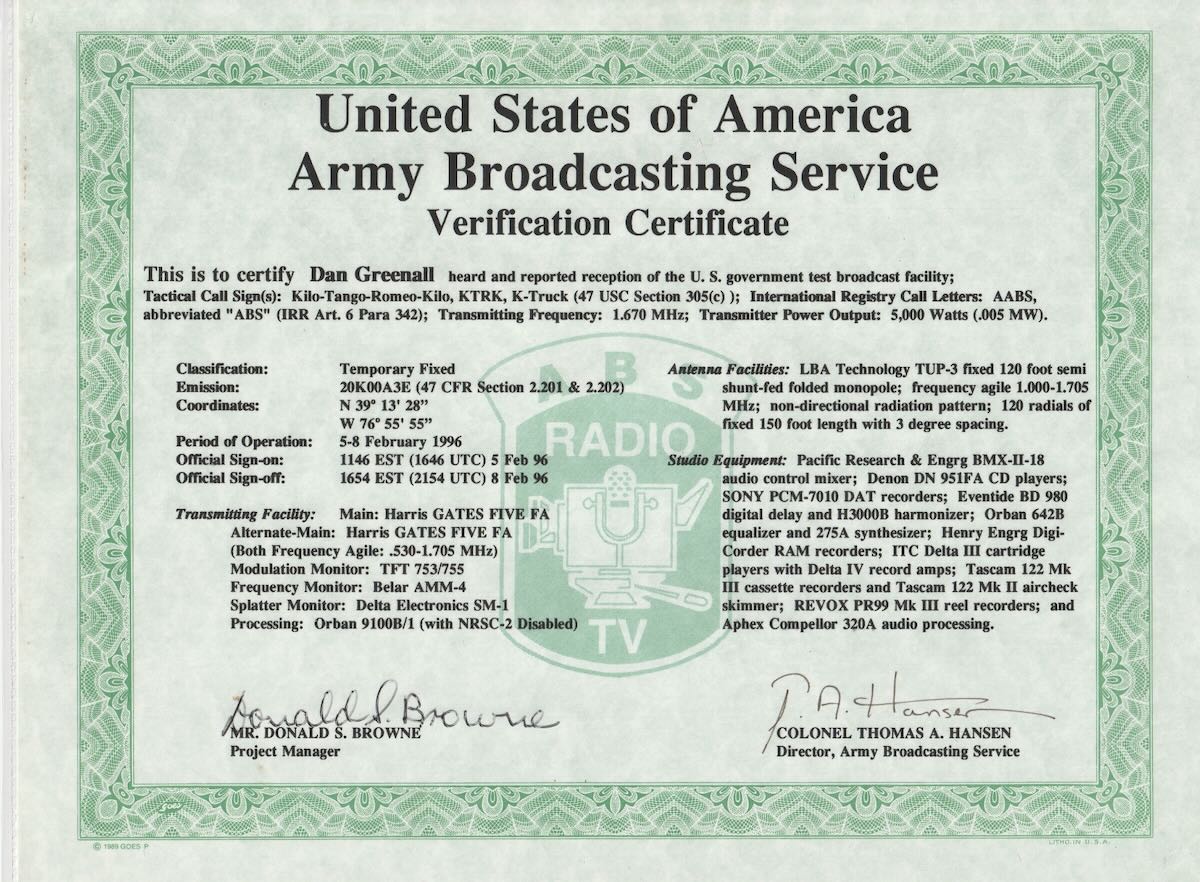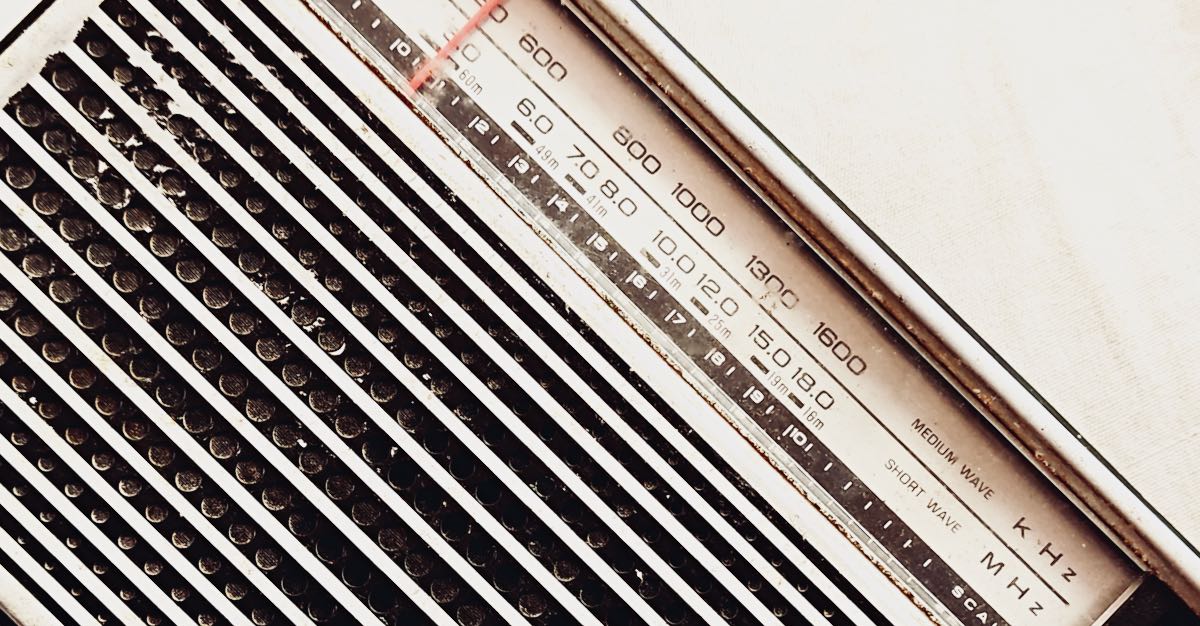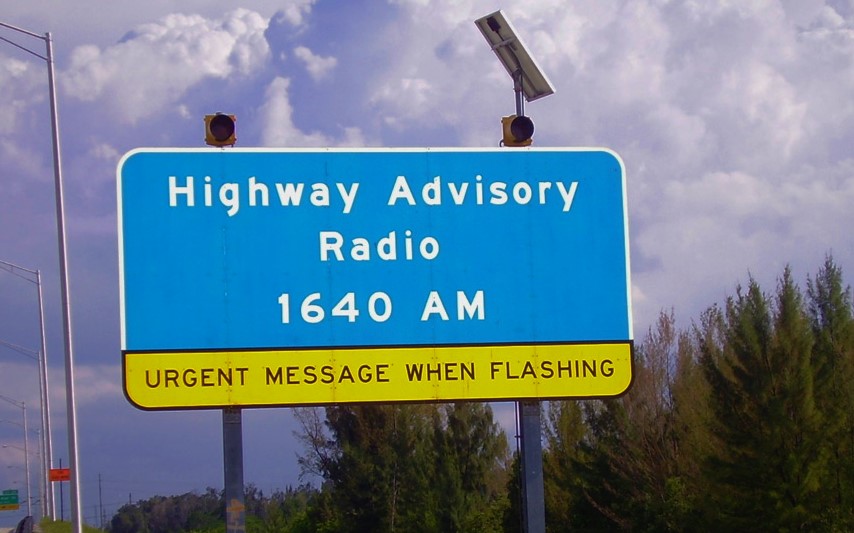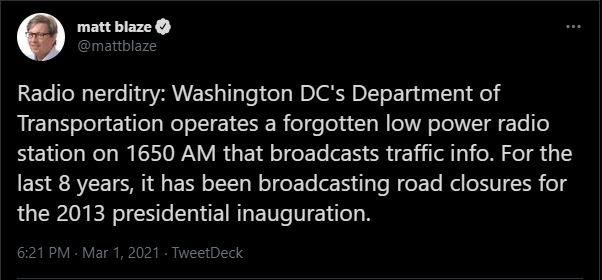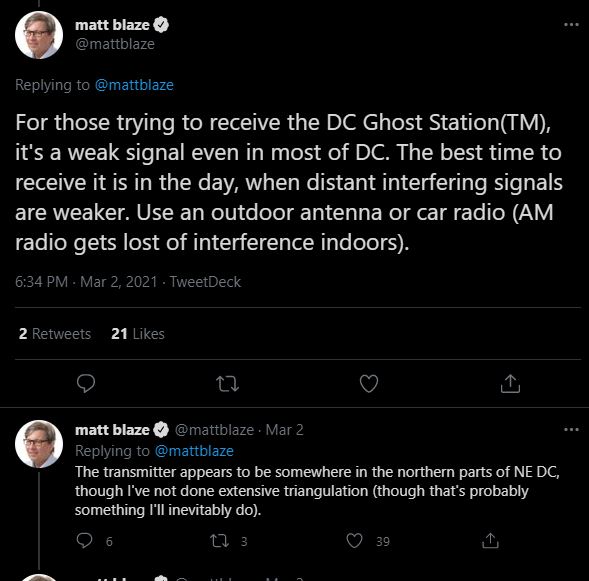Many thanks to SWLing Post contributor Dan Greenall, who shares the following guest post and asks, “Wonder who can add to this list?“:
A Look Back – DXing between 1610 and 1700 kHz
by Dan Greenall
1. The Caribbean Beacon, Anguilla West Indies 1610 kHz (1985 QSL)
2. NDB stations (non-directional beacons)
- transmitted call letters on CW, mostly from airports, heard in the 1970’s
- examples: MDE Medellin, Colombia 1690 kHz and RAB Rabinal, Guatemala 1613 kHz
3. U.S. Army Broadcasting Service KTRK 1670 Fort Meade, MD Feb 1996 articles and recordings
https://www.radioheritage.com/ktrk-k-truck-1670-khz/
4. FCC Part 15 Radio Stations
Example: WDKW 1630 “the Klaw” Dundalk High School near Baltimore, MD
Link to my recording made at a DX camp in Coe Hill, Ontario, Canada on April 20, 1997: https://archive.org/details/wdkw-the-klaw-1630
An internet search revealed the following;
Part 15 of the Federal Communications Commission (FCC) rules allows some low-powered radio devices to operate without a license on the AM and FM radio broadcast bands. These devices are subject to certain restrictions, including:
- Range: On FM frequencies, the effective service range is limited to about 200 feet (61 meters).
- Field strength: The field strength should not exceed 250 ?V/m (48db) at 3 meters.
- Detachable antennas: Part 15 rules prohibit detachable antennas on all Part 15 transmitters.
Some examples of Part 15 radio stations include:
- Microbroadcasting
Often used by hobbyists, drive-in theaters, or on college or high school campuses.
- Talking roadsigns, talking houses, or talking billboards
These transmitters air a repeating loop of information, such as traffic or highway construction. They typically operate on empty channels on the AM broadcast band.
- InfOspot
A custom product that can include special audio systems, USB / internet connectivity, cabinets, and antenna mounting styles.
- Free-radiate AM radio stations
Educational institutions can use a transmitter without a license if the signal coverage is limited to their property.
5. TIS (Travellers Information Stations)
1610 kHz with low power, usually around 10 watts, such as the one I hear near the Blue Water Bridge between Sarnia, Ontario and Port Huron, Michigan
6. Expanded AM broadcast band
Over a quarter century ago, these frequencies began to be used in the U.S. by BCB stations. I still have recordings of a half dozen of these from the early days.
WTDY 1670:
WNML 1670:
WMDM 1690:
KCNZ 1650:
KCJJ 1630:
KBGG 1700:
Also, here is a link to a column in Popular Communications magazine from February 1998.

